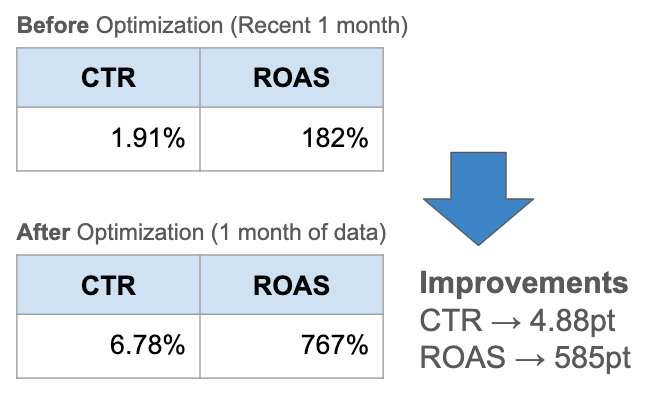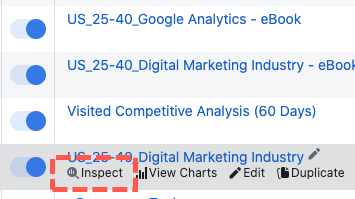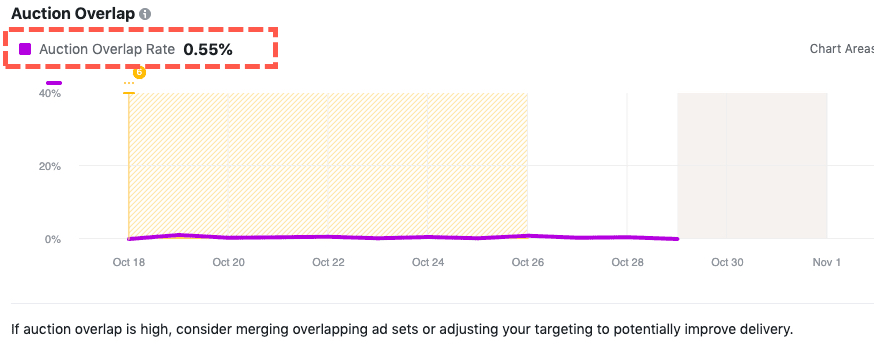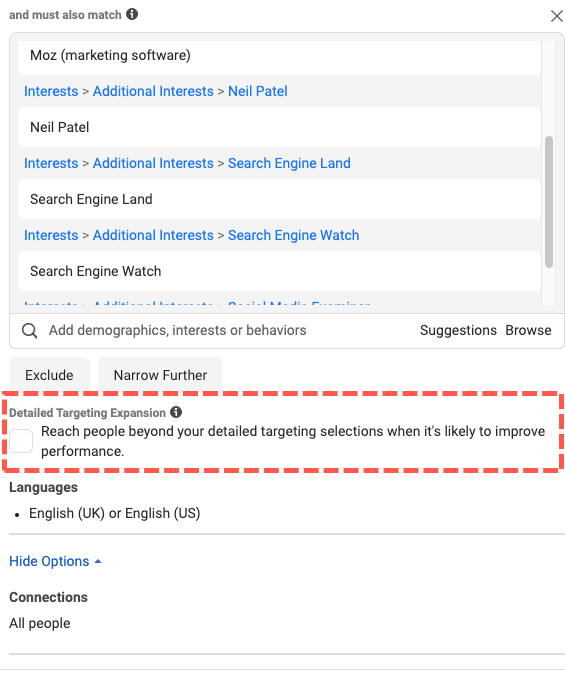Top 3 Common Facebook Ad Targeting Mistakes To Avoid

The following three factors come to mind when we determine Facebook or Instagram advertising performance.
- Campaign Structure
- Creative
- Targeting
In this blog article, I will focus on Targeting. Our learnings came from an account we inherited and performed various testings. It is based on a real business case.
When we avoided these three Facebook Ad mistakes, ROAS improved by 4x

With this client, we worked in parallel to improve the three factors highlighted at the beginning; Campaign Structure, Creative, and Targeting.
If you are a marketer struggling to improve the Facebook Ads performance, I recommend reviewing your Facebook Ad account immediately after reading the blog.
Top 3 Mistakes Marketers Make with Facebook Targeting Settings
Targeting is a major variable and a contributor to Facebook Ads performance. That’s why you need to make sure that you have it exactly right.
If the settings remain suboptimal, it could be a major factor that hinders your Facebook Ads performance. Your Targeting settings is an area that requires attention.
Let’s dive in the top 3 mistakes we’ve identified that could potentially generate a significant boost to your campaign if fixed.
Mistake #1 Over segmenting your audience
Targeting is set up on a per ad set basis. We have seen cases where the ad sets are based on granular categorized targeting.
The most common ones are:
- Retargeting on recency is subdivide into 1 day, 7 days, 15 days, etc.
- Subdivide the audience age into five-year increments.
Many marketers feel the retargeting should be broken down into granular segments when adjusting the bids. Now, more than before, the bidding logic is very different.
The major difference in the current bidding strategy from before is much of the bidding strategy is controlled by machine learning.
For many cases, excessive segmentation is incompatible with machine learning.
What’s important is targeting that fosters smart machine learning.
A key feature of a machine learning bidding strategy is that machine learning learns performance data and automatically bids on target.
There is one thing you absolutely must keep in mind when bidding with machine learning.
That is; You have to let it learn with enough data for it to make optimal bidding decisions.
Machine learning learns on a per ad set basis. If the ad set is overly fragmented, it isn’t easy to accumulate enough training data. As a result, optimization will not work well.
A similar situation applies to humans. If you want to improve your grades, you study a lot. The same is true for machine learning. To get smarter, you have to study and learn a lot.
The goal is 50 conversions!
Facebook’s guidelines recommend getting “50 conversions per week per ad set”. Anything less than this, your ad performance will be inconsistent due to insufficient training data.
Aim for “50 conversions per ad set per week” and try to consolidate ad sets targeted at similar audiences into one.
Many marketers mistakenly over segment their audiences with respect to things like device, ad placement, platform, gender, age and more.
This seems like it may be a good idea since you’ll have more granular control over each audience segment and an easy way to quickly see various performance metrics for each audience.
The truth is, you’ll actually be heavily inhibiting Facebook’s machine learning algorithms to effectively optimize your campaigns. In other words, you’ll be missing out on more money for your business.
It’s important to strike a balance between the trade off of granular segmenting and feeding machine learning algorithms proper conversion data. It’s recommended to feed a minimum of 50 conversions per week per ad set so that Facebook’s algorithm can properly learn.
Remember that many of the ways you might set up ad sets to measure audience segments in detail can actually still be measured by using Facebook’s dimension breakdowns reporting feature. This feature will allow you to see data for your campaigns by any of the following dimensions:
- Age
- Gender
- Country / Region
- Device
- Ad Placement
- Platform
- And many more…
You might be tempted to separate ad sets by some of the dimensions listed above but we recommend avoiding this unless absolutely necessary. If you’re in doubt just set up an experiment to collect actual data showing which set up performs better.
We recommend that instead of separating the ad sets by any of the dimensions above, just use the dimensions breakdown feature to see how your ads are performing in terms of each dimension.
If you’re feeding the algorithm enough data, then you’ll see your spend automatically being allocated towards the segments in each dimension that perform best.
Occasionally the algorithm may get things incorrect and so it’s still important to monitor your performance across these dimensions and intervene only if necessary.
Mistake #2 Excessive overlap between targeted audiences
Many people don’t know this, but the audience overlap between ad sets and target audiences is an important point to review.
Audience overlap doesn’t mean that there should never be an audience overlap. What to avoid is when ad sets are in competition with each other in an auction. When ads compete with each other, the poorly performing ad sets are automatically removed. This can result in lower volumes in ad delivery.
To avoid this, make it a habit to check for overlap between audiences regularly.
There are two timings to check your audience’s overlap rate
- Before the ads are delivered
- While ads are being delivered
How to check your audience’s overlap rate before ads are delivered.
For example, suppose you have created two targets based on interests.
A. Digital Marketing
B. Online Marketing
To check these two audiences for overlap before placing the ads, use Business Tools > Audiences > View Audience Duplicates.
First, check the boxes of the audiences you want to see overlaps, and then click “View Audience Overlaps.”

You will then see the percentage of overlap between these two audiences.

You can avoid excessive overlap by doing this check before executing the ads. If there is a high overlap rate, you should take steps to exclude audiences that you do not want to duplicate on both sides.
How to check your audience’s overlap rate during delivery.
The next step is to check for the audience overlap between the actual ad sets you have served.
First, go to the Ad Sets tab from the Ad Manager.

Next, click the “Confirm” icon for the ad set you want to review.

Fortunately, we didn’t have any duplicates in this ad set for the period.
If you’re wondering what’s keeping your performance from improving, we suggest you check your audience for possible overlaps?
Mistake #3 Targeting Expansion is not enabled for prospecting
The Targeting Expansion option is a feature that allows Facebook to reach a broader set of people than those you defined in the detailed targeting section.
Suppose Facebook determines that extending your reach to an audience other than the one you specified in the targeting setting will increase performance. In that case, it will extend the delivery to an audience that is not included in the target.
If you enable this option, a portion of your set campaign budget will be allocated to your original and new audiences only if Facebook decides that using this option will increase performance. The budget will be allocated to the audiences that are performing better for less money.
This doesn’t mean you have to turn it on. But it’s a feature you’ll want to take advantage of to prevent lost opportunities and maximize your ad performance.
How to set up Detailed Targeting Expansion
To set up Targeting Expansion, go to the Ads Manager and then to the ad sets tab.

Then, go to the Custom Audience setting under the Ad Set Settings screen. In the Custom Audience Settings, check the box for “Detailed Targeting Expansion.”

Final Thoughts
Facebook ads are getting more features and becoming more sophisticated over time. Therefore, the number of things to consider in setting your ads is increasing. Thus, logic is becoming more complicated. We’d like to cover many more common mistakes, but I’ll save that for another time.
There is no right answer to Targeting, or a guaranteed approach to get your ads to perform.
This thinking should go beyond Facebook or Instagram ad management. But what we could say is, marketers need to understand their customers well.
First, Targeting is the process of finding what the users are interested in your service, and would trigger them to convert. In other words, it is a process of searching for gold in the sand. You won’t hit the goldmine if you choose your targets blindly.
Once you gain a deep understanding of your customer base, then reflect this in your Targeting to maximize performance.
Do you need support for your digital advertising campaigns?
Principle’s paid search, and social advertising service provides a data-driven approach that helps our clients’ businesses grow.
